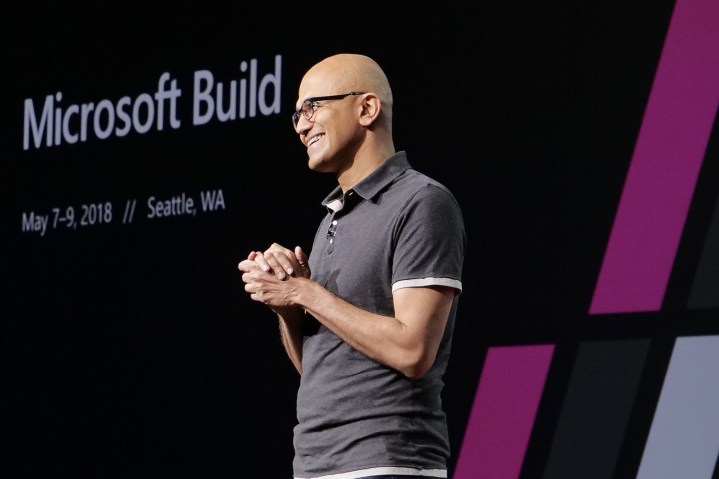
Our lives seem to depend more on our phones and less on our computers every day, and that has left Microsoft in a bit of an awkward position for the past few years. Without a hand to play in the phone business, the company has had to just go on pretending its users don’t also own devices like iPads, Android phones, and MacBook Pros.
But at its opening keynote at Microsoft Build on Tuesday, the company was ready to move forward with a new vision for how it could stay relevant in the mobile world. The strategy isn’t a new phone — it’s just an acknowledgement that people who use Windows PCs also rely on other devices throughout the day. The good news? When a company like Microsoft decides to play nice with others, it always turns out to be a good thing for us.
A new kind of Microsoft
“In a single day, you’re using multiple devices, you’re at multiple locations working with multiple people, and interacting using multiple senses,” said CEO Satya Nadella at the opening keynote at Build. “That’s the world we already live in. We need an operating system, we need a platform, that abstracts the hardware at that level — that creates an app model at that level. Single devices remain important, and will remain important. But this meta-orchestration is what we need to do. We need to up-level even our concept of what an operating system is. That’s what Microsoft 365 does.”
Microsoft is officially playing ball with Amazon.
Microsoft 365 is the company’s new integrated, cloud service that transforms its conventional services and applications into platforms that are ready for any device, regardless of which company happens to make it. It’s a strategy that lays in stark contrast to the Microsoft of old, which fought hard to protect its prized services within the bounds of Windows devices.
“The applications themselves are going to be multi-device,” said Nadella. “In fact, at this conference, you’re going to see how we’re taking the Windows shell and using essentially the same set of APIs in Microsoft Graph to extend the shell.”
That means Windows and its application catalog available on every device possible. One of the strongest demonstrations of this was Nadella’s vision of digital assistants. With the proliferation of Amazon’s Alexa assistant across every device imaginable, including Windows PCs, Microsoft is officially playing ball with Amazon. Nadella even went to the extent of bringing an Amazon executive out on stage to demonstrate how Alexa and Cortana (clumsily) work hand-in-hand.

“We want to make it possible for our customers to be able to get the most out of their digital assistants, not to be bound by some single walled garden.”
The idea of partnering competing digital assistants might seem silly at first, but it’s a great example of Microsoft swallowing its pride and being willing to work with competitive companies for the benefit of all of us.
“It puts people at the center versus devices at the center.”
Devices that don’t talk to each other (or even acknowledge that others exist) are a problem that a lot people deal with every day. They work all day on a Windows PC, but it’s a completely disconnected experience from the rest of their digital lives, which include iPhones, Echo Dots, and Google Calendars. Very few of us want to (or even can) live in the idyllic ecosystems these companies often design products for, though very few of these companies are willing to drop its guard for the sake of people’s overall experience.
“It puts people at the center versus devices at the center,” Nadella claimed.
Compared to the failed attempts of Windows 8 or Windows Mobile, Microsoft 365 is definitely a safer bet for Microsoft. The good part is that this time, it could actually help solve a problem rather than exacerbate it.


